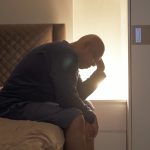
Millions of people spend hours looking at screens every day, straining their eyes. An ophthalmologist at Baylor College of Medicine in Houston offers some tips for easing both eye strain and headaches. “We focus on one object, especially an object that’s up close, like a computer screen or phone, for prolonged periods of time, and we don’t give our eye muscles time to rest,” said Dr. Masih Ahmed, an assistant professor of ophthalmology at Baylor. “If you don’t give your muscles enough time to rest, that can cause some tension of those muscles,” Ahmed explained. Dry eye can also cause eye strain, as you subconsciously blink less when reading, watching TV or working on the computer. Follow the 20-20-20 rule when working in front of a screen, Ahmed suggested. Take a 20-second break every 20 minutes to focus on something 20 feet away to give your eyes a rest. And use artificial tears if you have dry eyes. Prolonged eyestrain can give you a headache. If you wear corrective lenses, make sure you have the proper prescription, he advised. If you have an astigmatism, you won’t see as sharply. This might require more focus and energy, leading to eye strain. “You might squint more trying to get that pinhole effect for things to look clearer. Astigmatism can also make things look distorted in shape if… read on > read on >

























-300x200.jpg)










